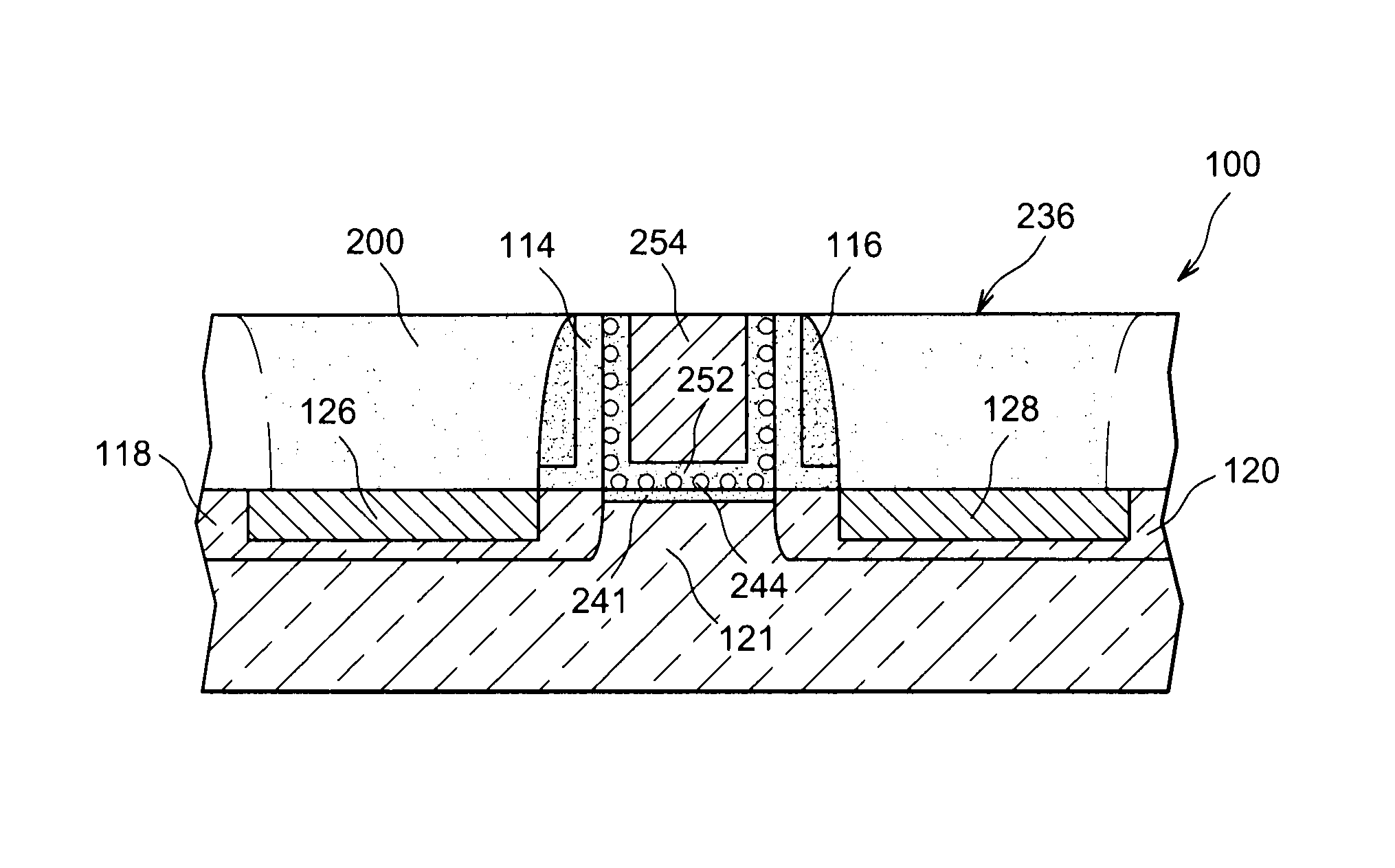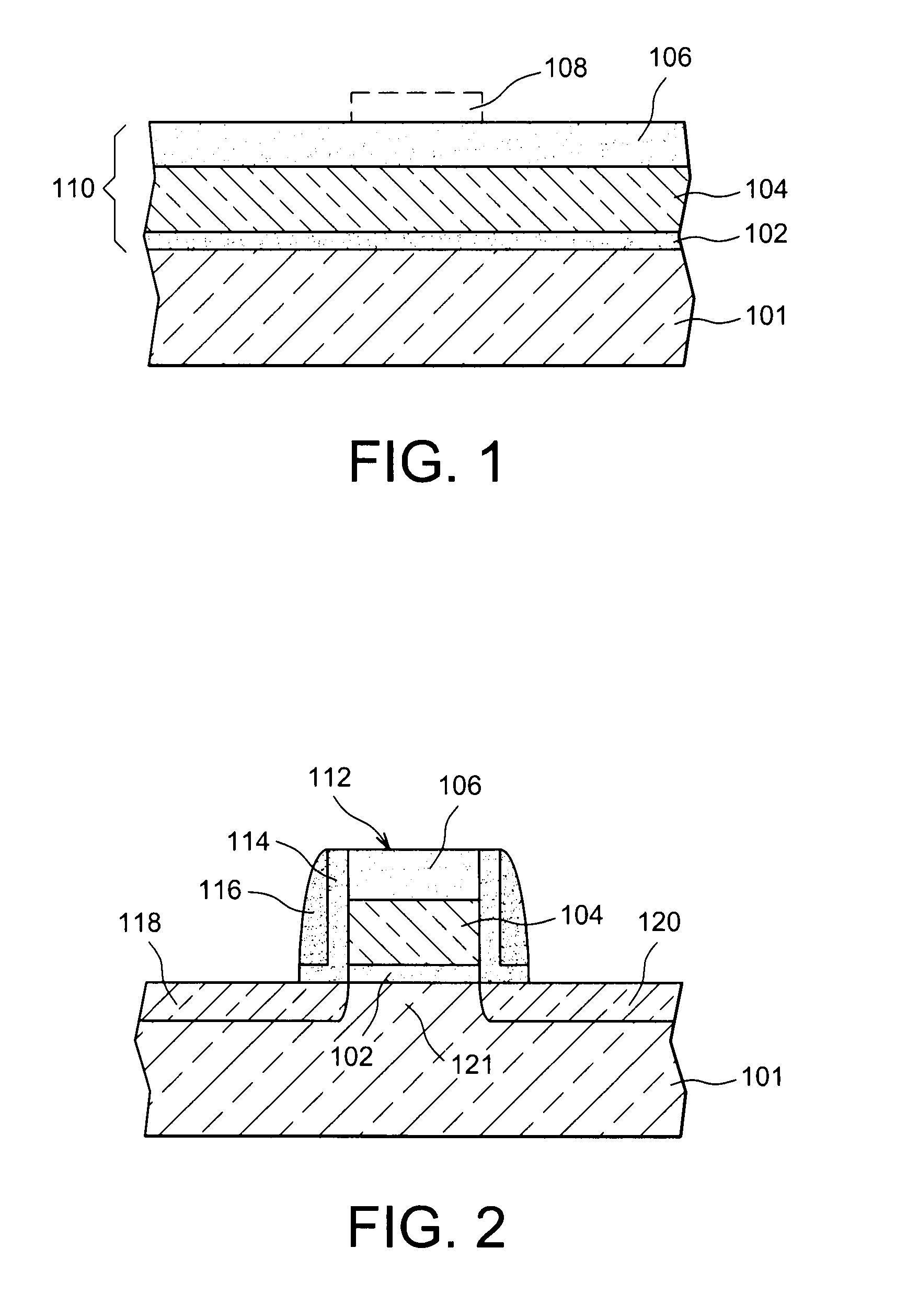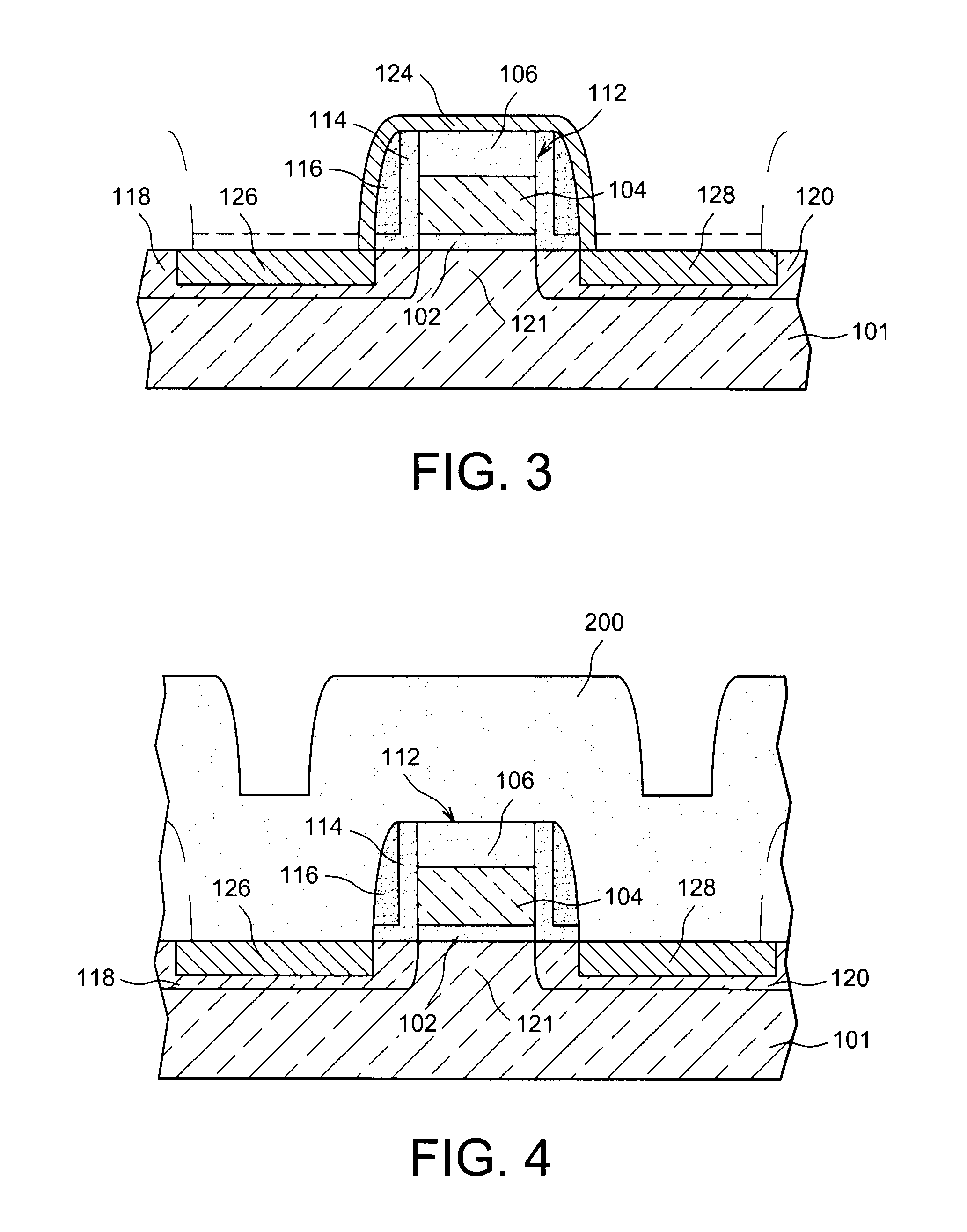Method for producing a conductive nanoparticle memory device
a nanoparticle memory and nanoparticle technology, applied in nanoinformatics, instruments, coatings, etc., can solve the problems of revealing defects in said dielectric, reducing the thickness of the dielectric, and reducing the dimension of the memory devi
- Summary
- Abstract
- Description
- Claims
- Application Information
AI Technical Summary
Benefits of technology
Problems solved by technology
Method used
Image
Examples
first embodiment
[0050]FIGS. 1 to 9 represent the steps of a method for producing a nanoparticle memory device
second embodiment
[0051]FIGS. 10 and 11 represent a nanoparticle memory device obtained by the implementation of a method for producing a nanoparticle memory device
third embodiment
[0052]FIG. 12 represents a nanoparticle memory device obtained by the implementation of a method for producing a nanoparticle memory device according to a
[0053]Identical, similar or equivalent parts of the different figures described hereafter bear the same numerical references so as to make it easier to go from one figure to the next.
[0054]In order to make the figures easier to read, the different parts represented in the figures are not necessarily to the same scale.
[0055]The different possibilities (alternatives and embodiments) must be understood as not being mutually exclusive and may be combined together.
PUM
 Login to View More
Login to View More Abstract
Description
Claims
Application Information
 Login to View More
Login to View More - R&D
- Intellectual Property
- Life Sciences
- Materials
- Tech Scout
- Unparalleled Data Quality
- Higher Quality Content
- 60% Fewer Hallucinations
Browse by: Latest US Patents, China's latest patents, Technical Efficacy Thesaurus, Application Domain, Technology Topic, Popular Technical Reports.
© 2025 PatSnap. All rights reserved.Legal|Privacy policy|Modern Slavery Act Transparency Statement|Sitemap|About US| Contact US: help@patsnap.com



